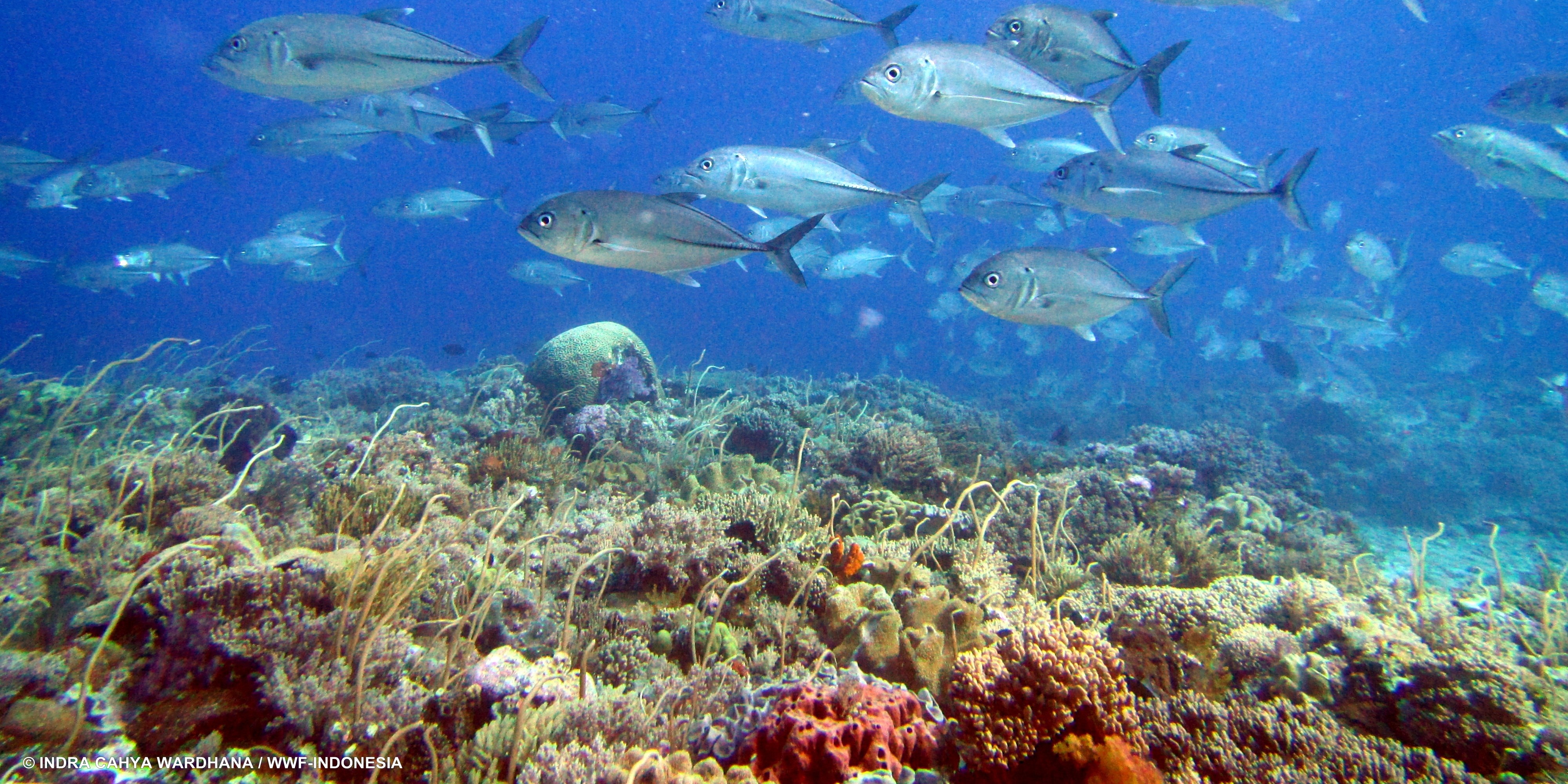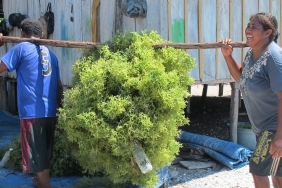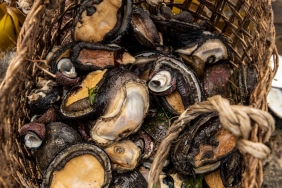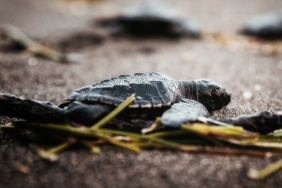#XPDCMBD: MANTA RAY WARM WELCOME IN MOA WATERS
Author: Amkieltiela (WWF-Indonesia)
"One, two, three, go!" Those were the words we uttered before heading out to sea together to collect ecological data on coral health and fish identification. Today (6/11), the blue sea of Moa Island warmly welcomed us. Bright sunlight penetrates to the seabed. The mystery of a million coral reefs is ready to be revealed.
For the tenth dive of this rapid survey, in addition to being the roll master, I will also document through photos the underwater life of Southwest Maluku and the data collection activities carried out by the Ecology Team.
After setting up all the transects, I took my first long swim with Ubun (WCS-IP) and Indra (IPB), while Jefri (Seven Seas) would roll up the transects when we had all finished collecting data.
In the middle of the process of taking pictures of various kinds of marine life, Ubun suddenly pulled my hand and pointed towards the sea surface. The sunlight immediately disappeared as if something was covering it. From a depth of about 8-9 meters, Ubun and I saw a large, winged, and tailed fish, swimming freely like a bird beating its wings. It was a Manta Ray (Manta birostris). After a few seconds of amazed silence, we both immediately pointed our underwater cameras at the exotic animal and pressed the snap button relentlessly to get as many photos as possible.
Apart from the long swim, seeing the Manta Rays directly in their natural habitat was also my first experience of diving. All this time, I had only heard about the beauty of Manta Rays from the stories of my fellow divers. While underwater, I couldn't stop being grateful for being able to meet and enjoy interacting with these rare animals. Plus, the photos I took of the Manta Rays were also well documented, making it easier for the Sea Team to identify them.
Manta Rays have characteristics such as a black back, white chest with black spots. Each individual has a different spotting pattern. This black spot is used as an identification key by researchers to distinguish between individuals in one species, like fingerprints on humans.
Truly this dive is one experience that I will never forget. I really hope that Manta Rays and other marine biodiversity in Southwest Maluku and throughout Indonesia can be well preserved, so that my children and grandchildren can also see firsthand the underwater beauty of this country and feel what I feel today.





